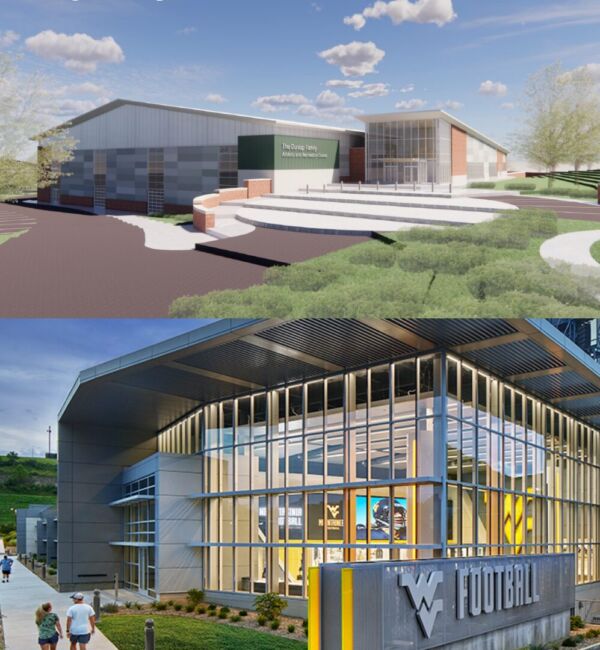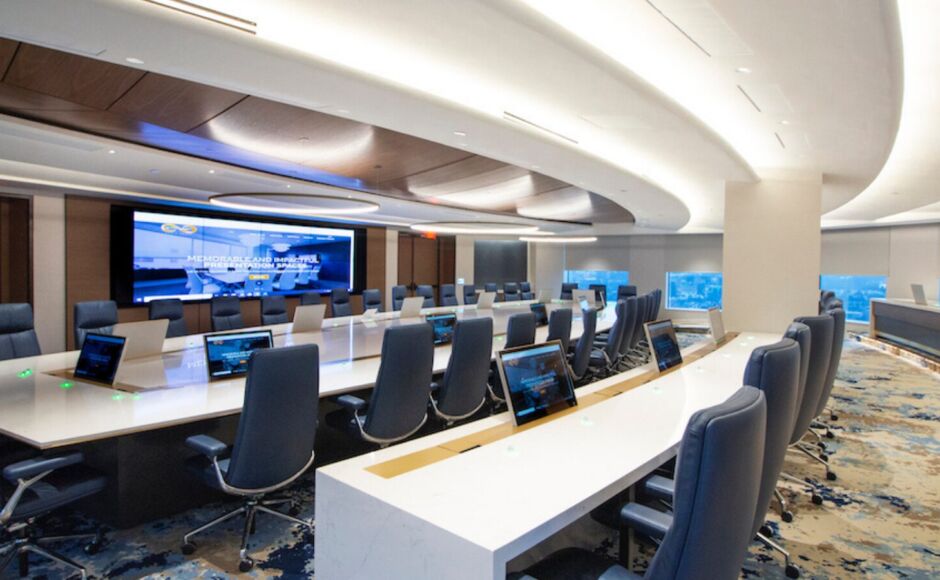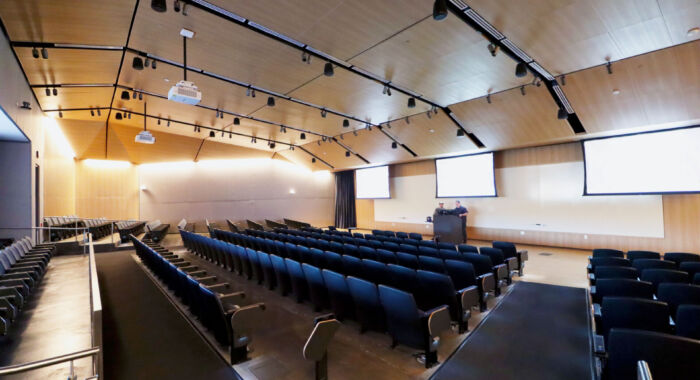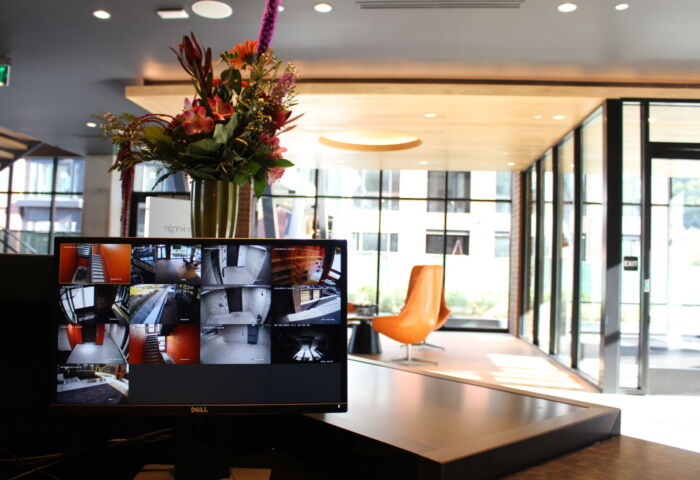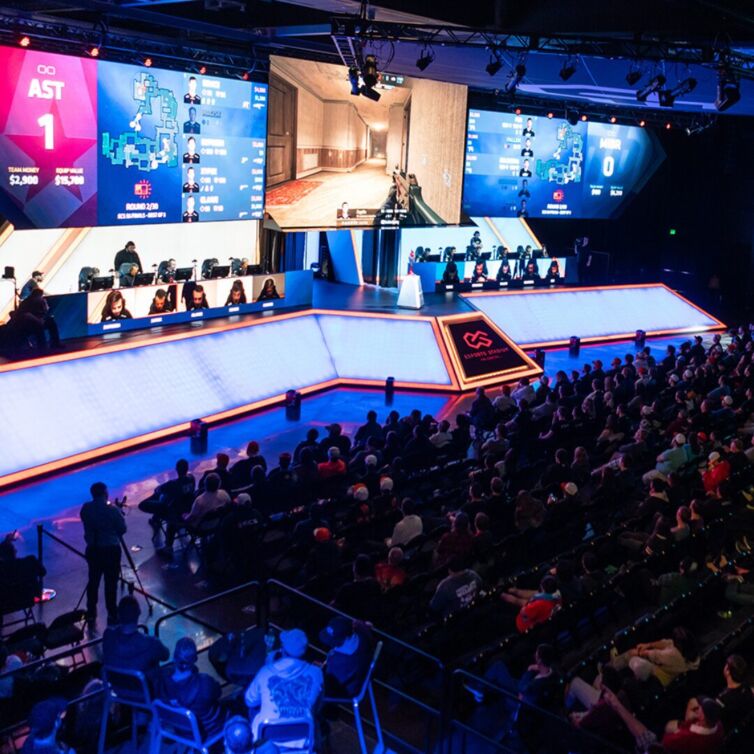Scaling Technology Design for Collegiate Athletic Facilities
A Look into Division 1 and Division 3 Facilities | July 31, 2024
There is plenty to consider when designing a university’s sports facility, from design and tech elements that include the audiovisual integration to software and analytics. Before projects begin, designers must to take into consideration the needs of the University, the functionality of the building, and the end goals of the client.
Some questions to ponder include: Is the project owner planning to use the space for recruitment purposes? Is the space going to serve student athletes only or the entire student body? Are we creating a game day experience for fans or an excellent game day process for the team?
Answers to these questions cover a wide range as we move along the spectrum of the Division 1 to Division 3 collegiate experience.
Audiovisual Design
Division 3
In a Division 3 environment, sports complexes will typically include audiovisual technology that is tailored towards athletic events and training. You may find video display boards for game information, sounds systems for announcements and music, and possibly video analysis systems for coaches and players to review performance.
It’s common for these facilities to integrate sports lighting systems and scoreboard controls into their design as well.
Division 1
Sports facilities at this level are more open to having the most advanced technology available, particularly in areas like coaching and player development.
These facilities can include high-resolution video walls for detailed analysis, video replay, advanced sound systems for immersive training experiences, and a specialized equipment for sports science research. Many universities integrate performance tracking systems into their facilities as well.
This technology will also manifest in athlete locker rooms, setting the tone for at-home game days and recruitment events.
Network Infrastructure
Division 3
These complexes may have less extensive network infrastructure, but they still require high-quality, reliable connectivity for university operations and fan engagement. When designing for these facilities, we want to take into consideration guest Wi-Fi for spectators and standard campus Wi-Fi for coaches, and staff.
Athletic facilities are a hub for the community, and these establishments want to ensure their network equipment supports live video streaming for games and events.
Network reliability and ease of management are key factors, as these facilities may not have dedicated IT staff on-site.
Division 1
Larger facilities often have an advanced network infrastructure to support a variety of needs. In addition to high-speed wireless internet connection, we will also implement a reliable wired connection system for sports analytics equipment and video analysis systems.
These facilities may also have dedicated equipment for live streaming of games and events, as well as for athlete performance monitoring and sports science research.
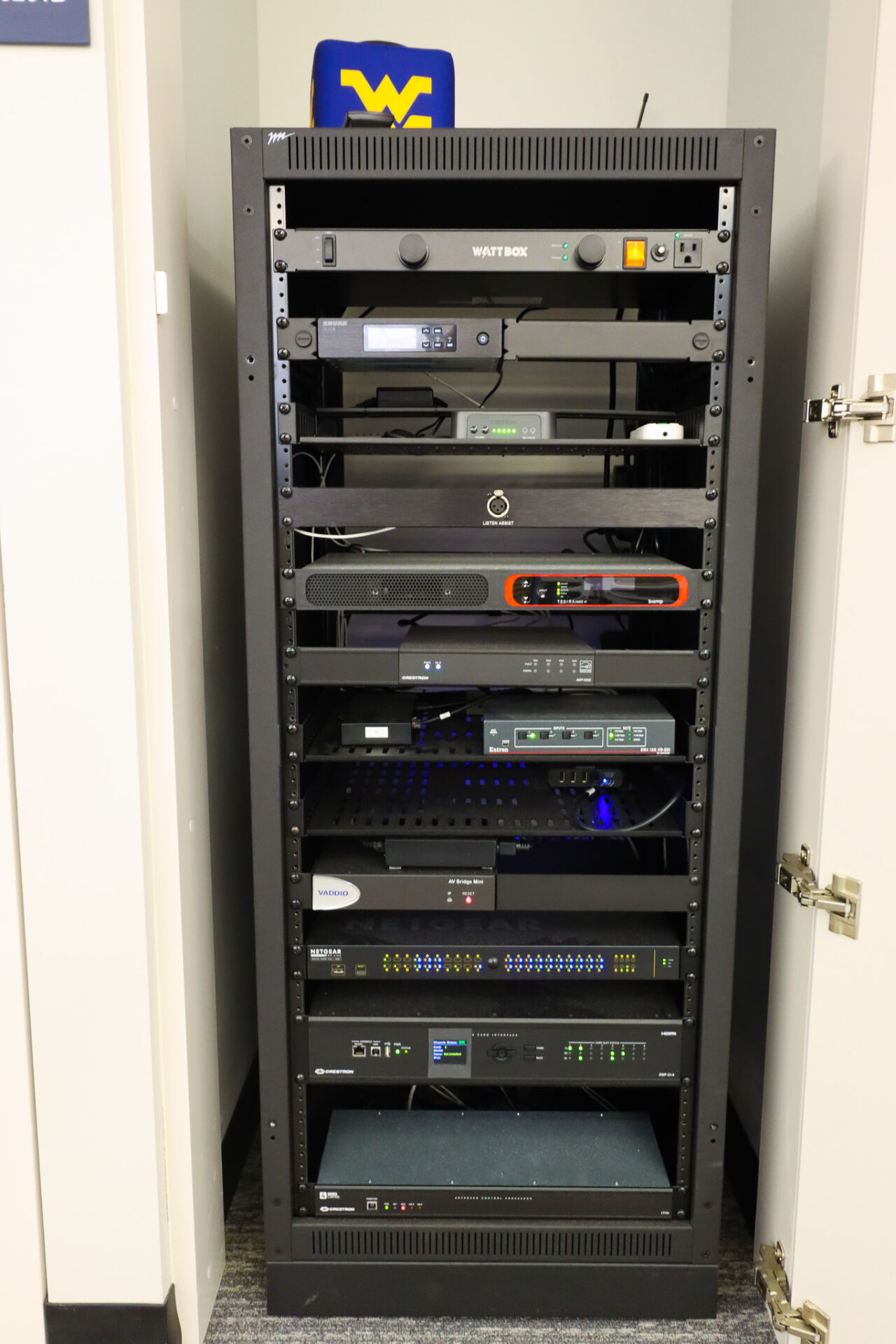
Acoustics
Division 3
Acoustics design at this level is geared towards enhancing the spectator experience during games and events. In a gymnasium, this may involve controlling sound reflections to improve clarity of announcements and music, as well as minimizing noise from the surrounding environment.
Sound reinforcement systems may be used to distribute sound evenly throughout the seating areas.
Division 1
Acoustic design in Division 1 athletic facilities is often more complex, as these spaces may be more specialized to one sport. Acoustics play a crucial role in enhancing athlete performance and ensuring clear communication among coaches and players.
Specialized acoustics treatments may be used in areas such as practice courts or training facilities to optimize sound quality.
Software and Analytics
Division 3
Division 3 athletic complexes may use software for managing sports events, scheduling practices, and tracking athlete performance.
Analytics software could also be used for video analysis of games, performance statistics, and injury prevention. Some complexes may integrate software for ticket sales, fan engagement, and live streaming of events as well.
Division 1
Division 1 facilities typically use advanced software for athlete performance analysis, sports science research, and injury prevention.
This could include video analysis software, athlete tracking systems, and specialized analytics tools for measuring physical performance.
Security
Division 3
Security in these athletic complexes may have similar security measures to higher education recreation buildings but tailored to the needs of sports events and facilities.
Access control might be more focused on securing locker rooms, equipment storage areas, and restricted areas within the complex. Surveillance cameras might be used to monitor playing fields, seating areas, and parking lots during events.
Emergency response plans are crucial, with staff trained to handle emergencies specific to sports facilities.
Division 1
These sport facilities often have more advanced physical security measures due to the high-profile nature of collegiate athletics. Facilities will place a large focus on access control systems, with biometric systems or other high-security measures in place.
Surveillance systems are extensive, covering all areas of the facility, including practice fields and athlete training areas. Emergency response plans are comprehensive, with staff trained for various scenarios, including crowd control during large events.
Each one of these factors are crucial to a well-functioning college sports complex. While there are several differences in technology and features throughout different divisions, a well-designed facility could be the differentiator in a team’s success.
We take pride in the functionality of the sports facilities that we design here at BrightTree Studios. Click here to read more about design and sports facilities.


